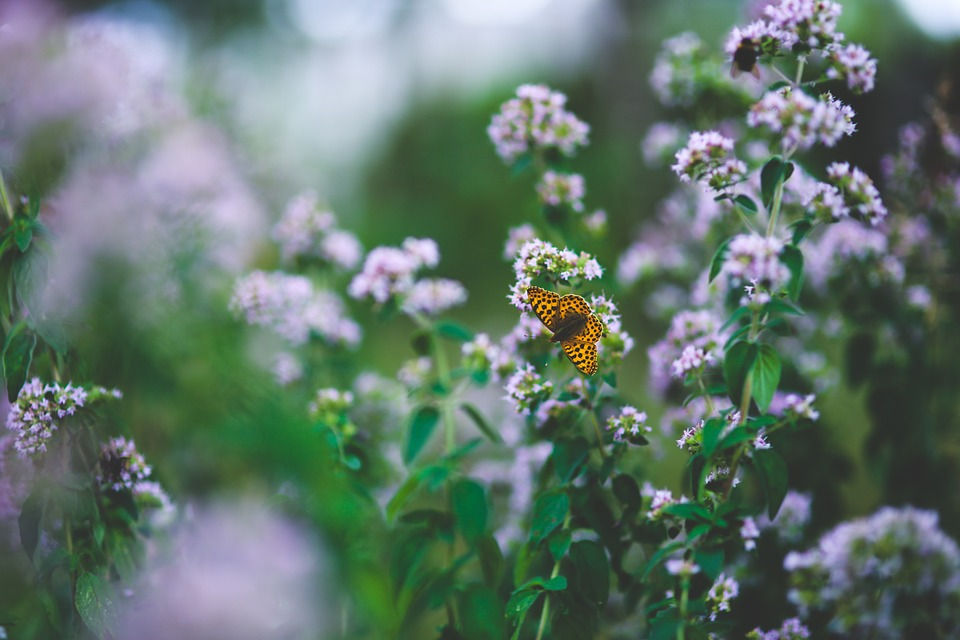Oregano The Gateway Herb
- Sarah Dafoe

- Sep 20, 2021
- 4 min read
Culinary herbs are some of our best “gateway herbs,” to get the “health curious” on the path to herbalism and Oregano is one of the most common herbs heard of. Usually found in household pantries, when most people think of Oregano, pizza and pasta sauce usually come to mind, but for over 4,000 years this ancient herb has been worked with by healers worldwide, to treat a variety of ailments and to strengthen the body's ability to fight off illness.

Oregano has the Latin name of Origanum vulgare and is a herb from the mint, or Lamiaceae family. The name comes from the Greek words “oreos,” meaning mountain, and “ganeos,” meaning brightness/joy/beauty - it was commonly called "joy of the mountains" due to its beauty and abundance, where it grew wild on the Mediterranean mountainsides.
According to Greek mythology, Oregano was created by the goddess Aphrodite as a symbol of happiness and so it was included in marriage ceremonies to enhance joy and in funerals to convey peace to the dead. In most European folklore, Oregano has been portrayed in a positive light, associated with love, protection, purification, healing and happiness, and is steeped in religious tradition and myth.
The use of Origanum for healing dates back centuries and is recorded in the earliest herbals and natural histories between 1600-1200 B.C., when images of the plants were inscribed on tablets by the Hittites of Asia Minor/Syria. Species that have been applied medicinally include O. vulgare, O. majorana, O. dictamnus and O. syriacum, among others. Origanums have been applied to many conditions, from digestive problems, menstrual irregularities and cancer, to aches, pains and the common cold.
The Greeks believed that Oregano was a good antidote to poison and also applied it to skin irritations and convulsions. During the middle ages, Oregano was commonly worked with for medicinal purposes throughout Europe, chewing Oregano leaves for rheumatism, toothache, indigestion, and coughing. Oregano then made its way to China, where it was applied to fevers, vomiting, upset stomach, dysentery, jaundice and childhood malnutrition.

The Oregano plant contains flavonoids, tannins, phenolic acids, carvacrol, thymol and origanene. It's extensive medicinal actions include antialgic, digestive, antidiabetic, anticatarrhal, deworming, antiseptic, carminative, antitussive and bequic, emmenagogue, inflammation modulator, estrogenic, tonic, antioxidant and expectorant.
Oregano has powerful bacteria and fungi killing properties thanks to its carvacrol compound, which is a creosote-scented phenol with antibacterial and antifungal properties. Studies have shown that carvacrol and thymol have powerful anti-inflammatory and anti-microbial activity and are strong antioxidants that help prevent cell damage from free radicals. Like all plant chemicals, the amount of carvacrol varies depending on the species, subspecies and growing conditions.
Orally, oregano is beneficial for respiratory tract infections including influenza, the common cold, croup, coughs, asthma, allergies, sinusitis, and bronchitis. Oregano is also used orally for gastrointestinal disorders, such as dyspepsia, bloating, and intestinal parasites as well as for dysmenorrhea, rheumatoid arthritis, urinary tract disorders and infections, menstruation cramps, headaches, diabetes, bleeding following tooth extraction, heart conditions, and hyperlipidemia.
Topically, oregano oil is applied to acne, athlete's foot, dandruff, insect and spider bites, canker sores, gum disease, psoriasis, sciatica, seborrhea, ringworm, rosacea, muscle and joint pain, varicose veins, wounds, and warts. It is also applied topically as an insect repellent.
Oil of Oregano is reportedly used to kill lice, and in homeopathy, oregano is considered an aphrodisiac. Preparations include infusions, tea powders, gargles and baths.
Water infusions of Oregano have traditionally been worked with to treat dysentery, colitis, bronchopulmonary, gastric acidity, gastrointestinal diseases, as a carminative and stomachic (taken with meals to reduce gastrointestinal distress) and as an antispasmodic, often in the form of a tea. It has also been applied as a strong infusion in gargling preparations to treat oral infections such as blisters, ulcers, gingivitis, and toothache. Oregano is also considered to be a diuretic, emmenagogue, and aphrodisiac. A warm infusion would be made to produce diaphoresis or promote menstruation, and to reduce general pain and inflammation.
WATER INFUSION

For a herbal tea steep 1 teaspoon of fresh herb for every one cup (150 ml) of boiling water as an herbal infusion, keep covered so the volatile oils do not evaporate off, this can be left for 20 minutes or overnight for a stronger infusion.
DRIED MEDITERRANEAN HERB MIX
This combination of dried herbs features the origanums, and goes with all sorts of dishes from tomato sauce, pasta dishes, marinades, vegetables, meat and fowl, minestrone and other soups, vinaigrettes for salads, and mixed with garlic, olive oil, and a little fresh Parmesan for garlic bread. If you are using Greek oregano, which is much more pungent than Italian (or Sicilian), then use equal portions of the herbs—⅓ cup of each.
½ cup whole dried Italian oregano leaves
¼ cup whole dried marjoram leaves
¼ cup whole dried Genoa Green basil leaves
Combine in a bowl and toss to blend. Pack the herbs into a glass jar, label, and store away from heat and light. When you use the herbal blend, crumble the leaves as you need them in order to release the essential oils and flavor right into the dish.









Comments